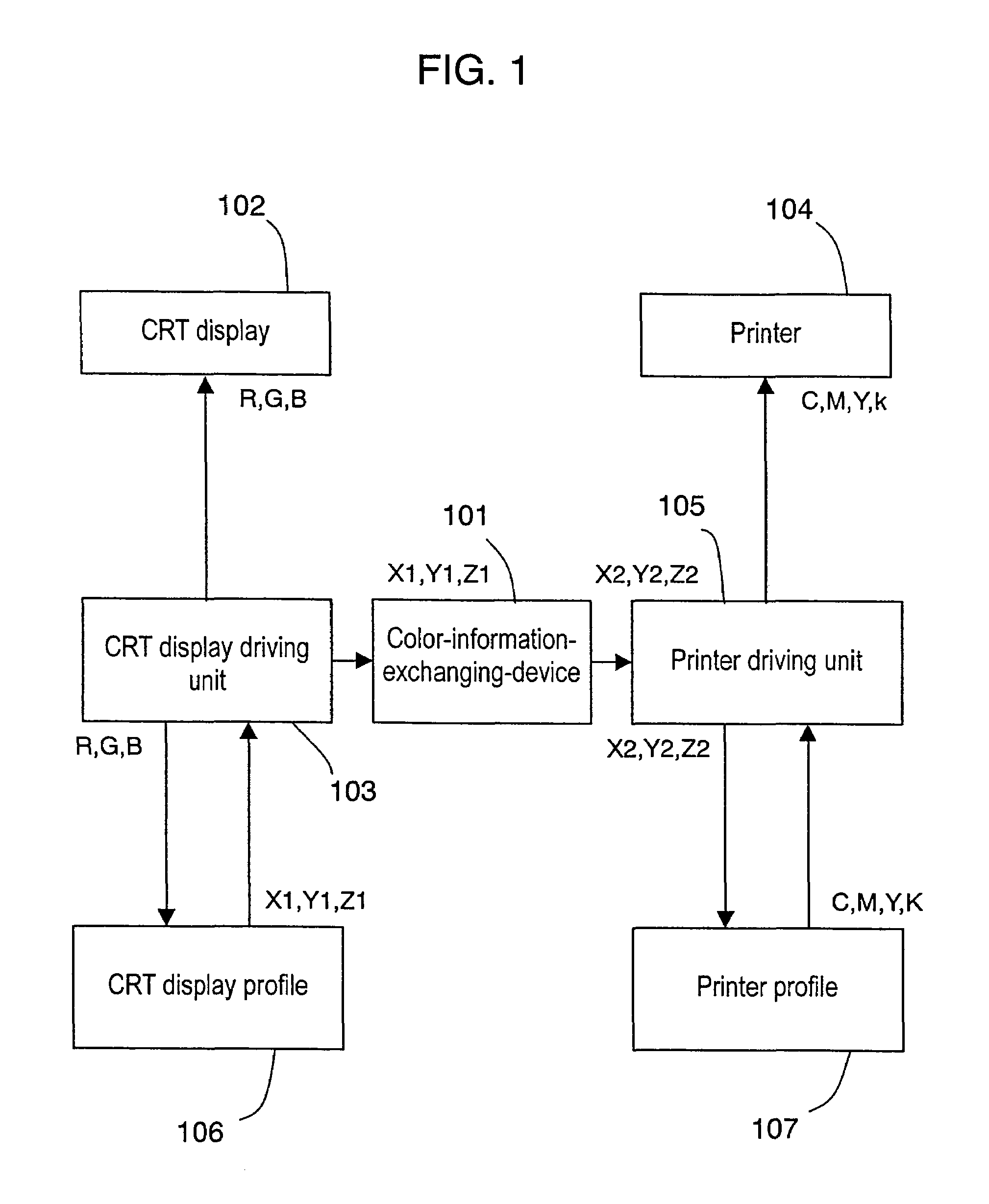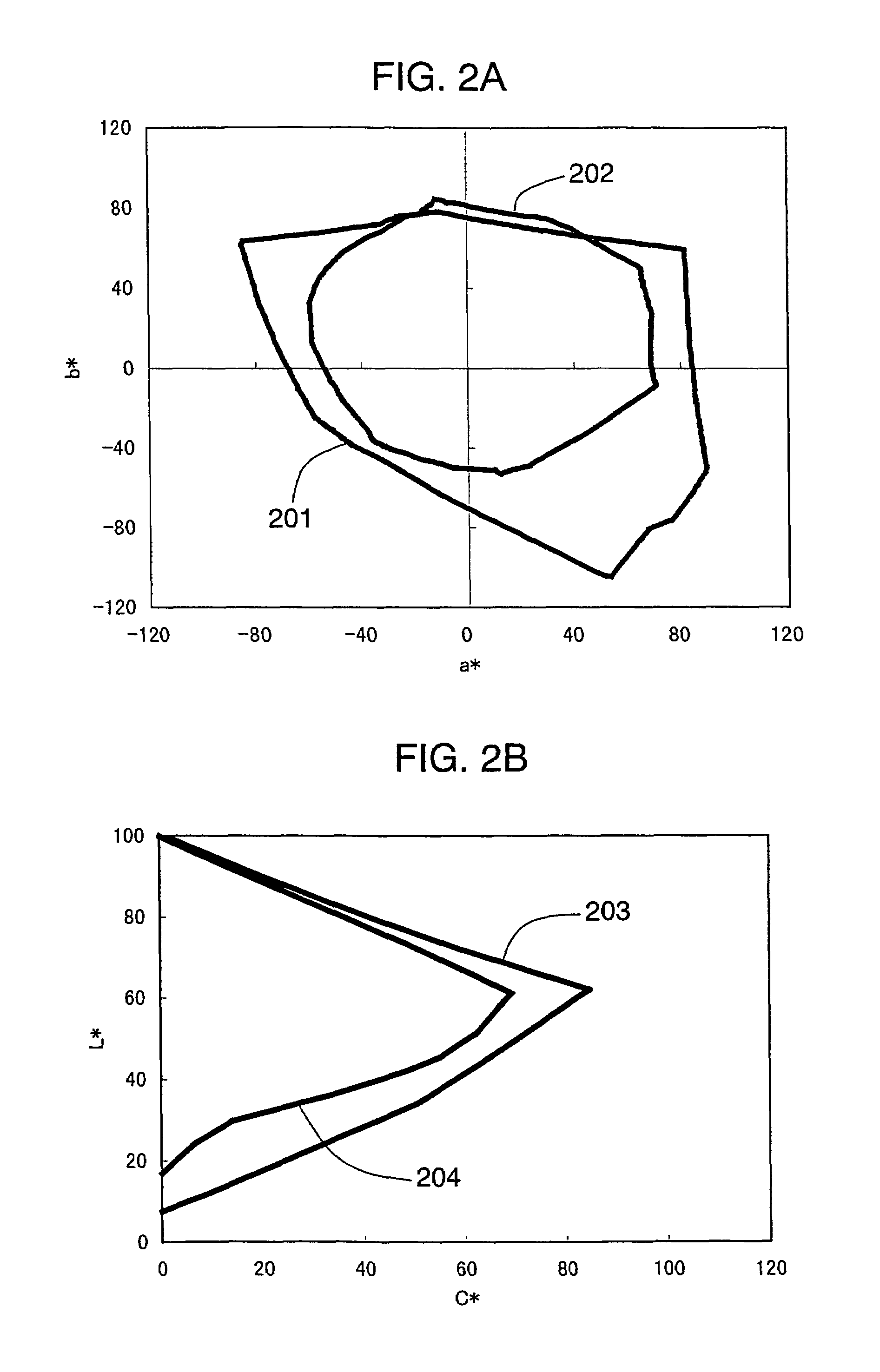Method of normalizing color information, method of exchanging color information using the same method and device using the same methods
- Summary
- Abstract
- Description
- Claims
- Application Information
AI Technical Summary
Benefits of technology
Problems solved by technology
Method used
Image
Examples
exemplary embodiment 2
[0208]The color information exchanging device in accordance with the second exemplary embodiment is demonstrated hereinafter with reference to FIG. 1 and FIG. 14. This is the case where a CRT display and a print by a printer differ greatly in a reference white color; i.e., mapping color appearance is performed in this embodiment.
[0209]FIG. 14 illustrates an internal structure of the color information exchanging device used in the second embodiment.
[0210]In FIG. 1, CRT display driving unit 103 outputs the colorimetric values of the colors displayed on CRT display 102. These colorimetric values are converted to lightness, chroma, and hue, which are three attributes of human visual sight to the colors, by polar coordinate converter 2104 shown in FIG. 14, then the converted values are supplied to two systems.
[0211]One of the systems performs gamut mapping per se. In this system, gamut mapping employs pre-mapping section 2109 and main-mapping section 2110.
[0212]The other system is used f...
exemplary embodiment 3
[0349]A color information exchanging device in accordance with the third exemplary embodiment of the present invention is demonstrated hereinafter with reference to FIG. 26.
[0350]FIG. 26 is a block diagram of a color management system introducing a color information exchanging device in accordance with the third exemplary embodiment of the present invention.
[0351]This third embodiment is designed based on an assumption that the gamut of a source device is not so much different from that of an output device. Therefore, a case, where the source device is a CRT display and the output device is a projection display, corresponds to the third embodiment. Another case, where both of the source and output devices employ CRT displays and yet the color temperatures of respective reference white color points are different, also corresponds to this third embodiment.
[0352]In the following description, the source device is a CRT display having a color temperature of 9300K (hereinafter referred to...
PUM
 Login to View More
Login to View More Abstract
Description
Claims
Application Information
 Login to View More
Login to View More - R&D
- Intellectual Property
- Life Sciences
- Materials
- Tech Scout
- Unparalleled Data Quality
- Higher Quality Content
- 60% Fewer Hallucinations
Browse by: Latest US Patents, China's latest patents, Technical Efficacy Thesaurus, Application Domain, Technology Topic, Popular Technical Reports.
© 2025 PatSnap. All rights reserved.Legal|Privacy policy|Modern Slavery Act Transparency Statement|Sitemap|About US| Contact US: help@patsnap.com



